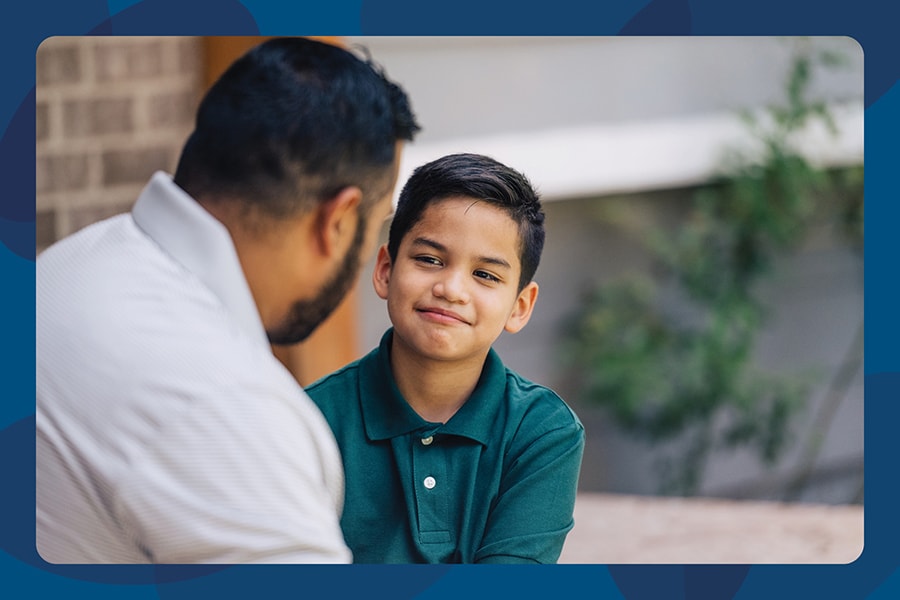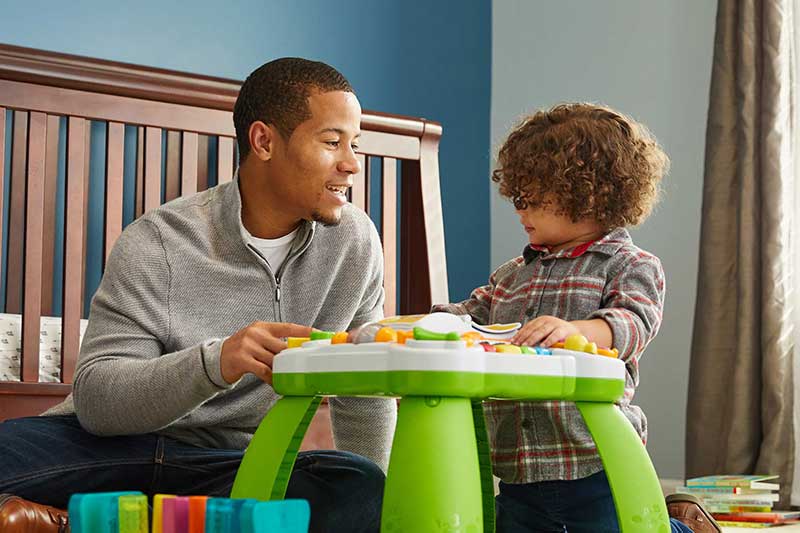Kids and Feelings: 6 Facts About Emotions
 Many of us grew up hearing lots of different things about emotions, and it can be confusing to know the truth. What we teach and how we talk to our kids about feelings are important parts of building their resilience (the ability to handle life’s ups and downs). Learn 6 facts about feelings that you can embrace yourself and teach the kids in your life. If you never learned the truth about emotions, it’s not too late.
Many of us grew up hearing lots of different things about emotions, and it can be confusing to know the truth. What we teach and how we talk to our kids about feelings are important parts of building their resilience (the ability to handle life’s ups and downs). Learn 6 facts about feelings that you can embrace yourself and teach the kids in your life. If you never learned the truth about emotions, it’s not too late.
In this article:

We all have feelings, whether we acknowledge them or not
It's important to teach our kids—and remind ourselves—that we all have feelings, whether or not we want to accept them. It may be tempting to ignore unwanted feelings, but they always bubble up to the surface.
Have you ever noticed that you feel cranky when you’re hungry? Or that you get headaches when you feel stressed? Our feelings are clues to what’s going on inside our bodies and minds, and they’re important to pay attention to.
Help your child build resilience by encouraging them to be a feelings detective—to slow down, listen to their body’s clues and recognize their emotions, rather than avoid them. For example, if you notice your child regularly complains of stomachaches before certain activities or events, encourage them to identify how they feel. Are they nervous about making friends or failing at a new activity?
- Instead of saying, “You always have a stomachache on test days, and you’re always fine by the end of the day.”
- Try saying, “I wonder if you’re feeling worried about your test today, and maybe that’s why your stomach hurts. What do you think? Would it help if we took some deep breaths together?”

All feelings are OK and normal
Feelings aren't good or bad, positive or negative. They’re not a sign of strength or weakness. Feelings just … are. For example, anger isn't bad. It's a normal feeling that we all feel at different points throughout our lives. In the same way, happiness isn't good. It just is.
The reality is that we all feel a variety of emotions at any given time. But if kids think certain feelings are bad, they’ll likely have a hard time accepting or expressing how they feel. Instead, they’ll hold in those feelings, which can be harmful.
Help your child build resilience by encouraging them to feel whatever they feel. Validate whatever they’re feeling as OK and normal (even if you don’t agree). Keep in mind that letting someone know that their feelings are normal and valid doesn’t mean you agree or feel the same way.
- Instead of saying, “There’s nothing to feel embarrassed about. Brush it off. No biggie!”
- Try saying, “It’s completely normal to feel embarrassed. We all feel that way sometimes.”

Feelings are temporary and can change from moment to moment
Sometimes it can be hard to see beyond what we’re feeling in a given moment. When this happens, it can be helpful to remind ourselves that feelings are temporary. We won’t feel this way forever. Our feelings can change moment to moment—both what we’re feeling and how strongly we feel it.
While we can’t control how we’re feeling, we can control how we respond to our feelings.
Have you ever noticed how your mood changes when you listen to your favorite song, call a friend or take a walk outside? Or if you slow down and take a few deep breaths? These are all healthy ways to cope with emotions. Help your child build resilience by teaching them that feelings are temporary, and that they can use healthy coping skills to feel better.

We can feel more than one feeling at a time
Life can be complicated, and so can our emotions. It’s normal to feel more than one thing at a time. On the first day of a new job, you might feel excited and nervous. Your child might feel the same way on the first day of school.
Feeling many emotions at once can be confusing or overwhelming for kids. Help them build resilience by teaching them that it’s OK and normal.
- Instead of saying, “You’ll be fine. Everyone has to go through it.”
- Try saying, “It’s the first day of school, and you may be both excited and nervous at the same time. But that’s OK and normal! I’ve felt the same way before.”

It's OK (and helpful!) to talk about feelings
Have you ever thought that talking about your feelings will only make things worse? But often when we share our feelings with someone we trust, we feel less alone and more supported.
The same is true with kids. Help your child build resilience by teaching them that it’s OK and helpful to talk about all feelings—no emotions are off limits.
- Instead of saying, “You’re OK. Don’t worry about it.”
- Try saying, “It’s normal to feel upset about something like this, and talking about it can help. Would you like to talk about it with me or someone else?”
Have regular, daily conversations about feelings. Try using these conversation starters to talk about feelings anytime you want to connect with your child in a meaningful way.

It's never too early or too late to teach your child about feelings
Long before kids can talk, they’re taking in information about the world around them and looking for cues from adults to make sense of it all. You can start building resilience in your infant by identifying feelings.
You might say:
- "I see you smiling. You look happy."
- "I see you crying. You look sad."
By doing this, you’re starting to teach your child feelings words. This can help them identify and express their feelings as they get older. But it doesn’t stop there. Keep building resilience by teaching your child about feelings as they grow up.
Just like it's never too early to start teaching your child about feelings, it's also never too late. Learning how to identify and express feelings is a lifelong process. Help kids build resilience by teaching and talking about feelings at any age.
At times, feelings can be confusing and complicated. But remember, they’re clues to what’s going on within our bodies and minds. It’s important for kids to learn from an early age not to fear or ignore their feelings, and that all feelings are OK and normal.
At the end of the day, there’s no escaping our feelings. No matter how hard we try to keep them in, they eventually find a way out. The best thing we can do for our kids (and ourselves) is make talking about feelings a regular part of our lives. It’s a key part of building resilience in all of us.




